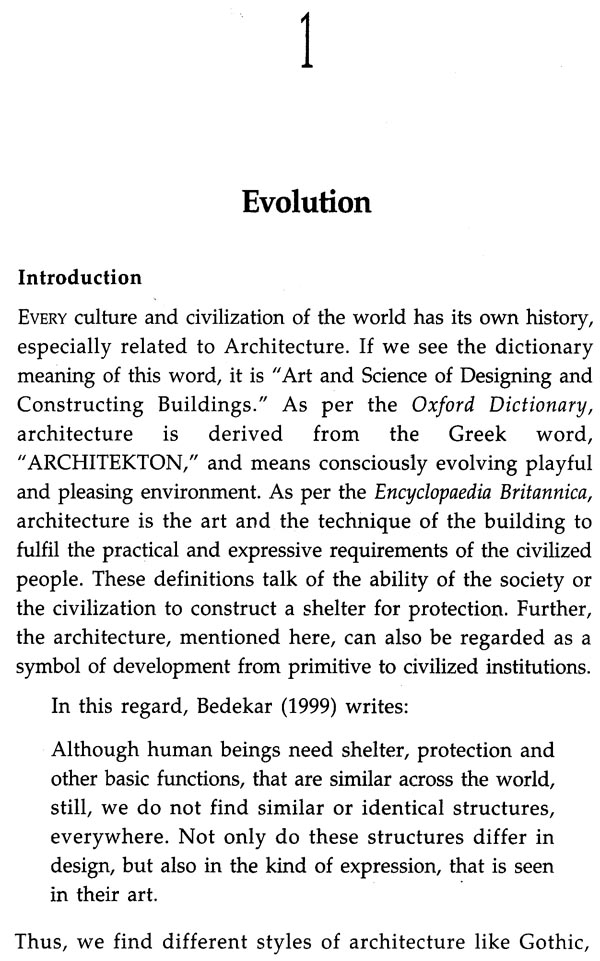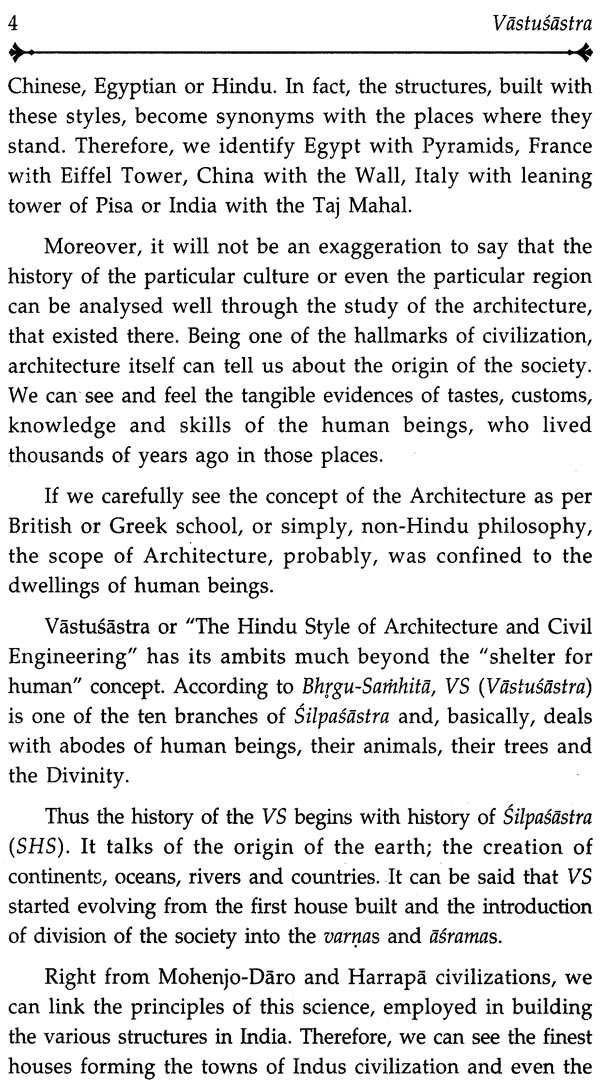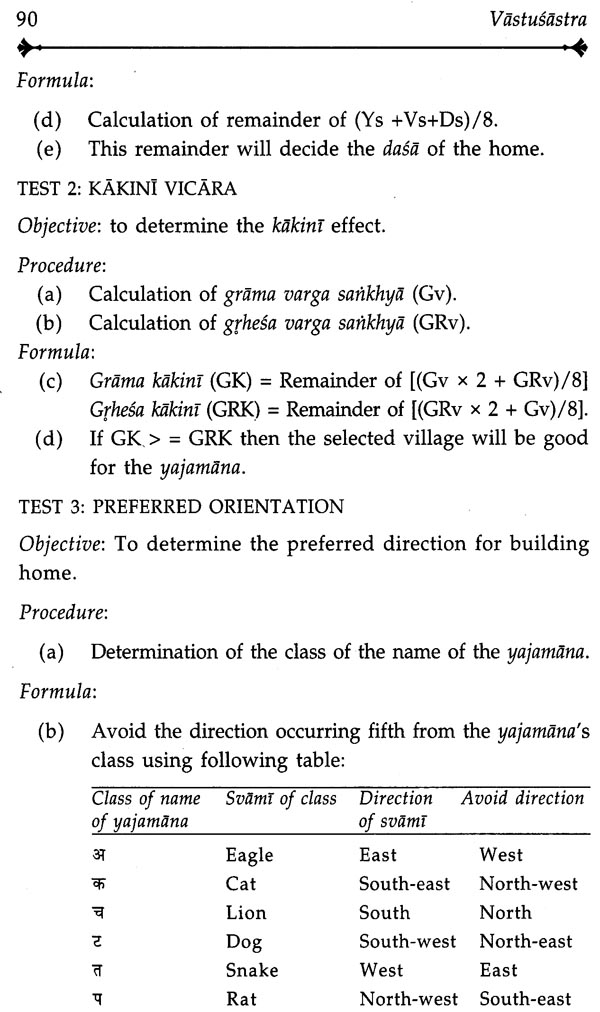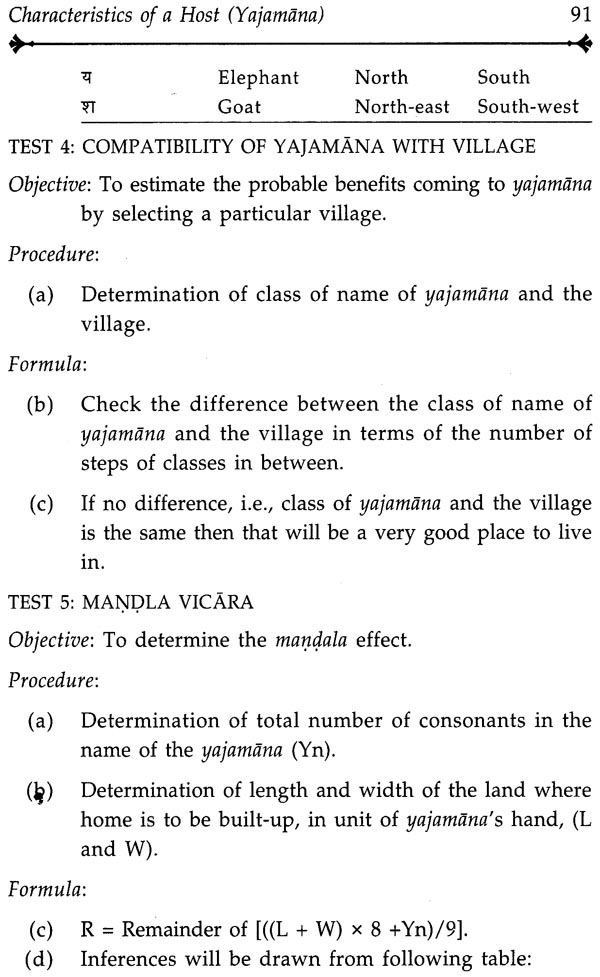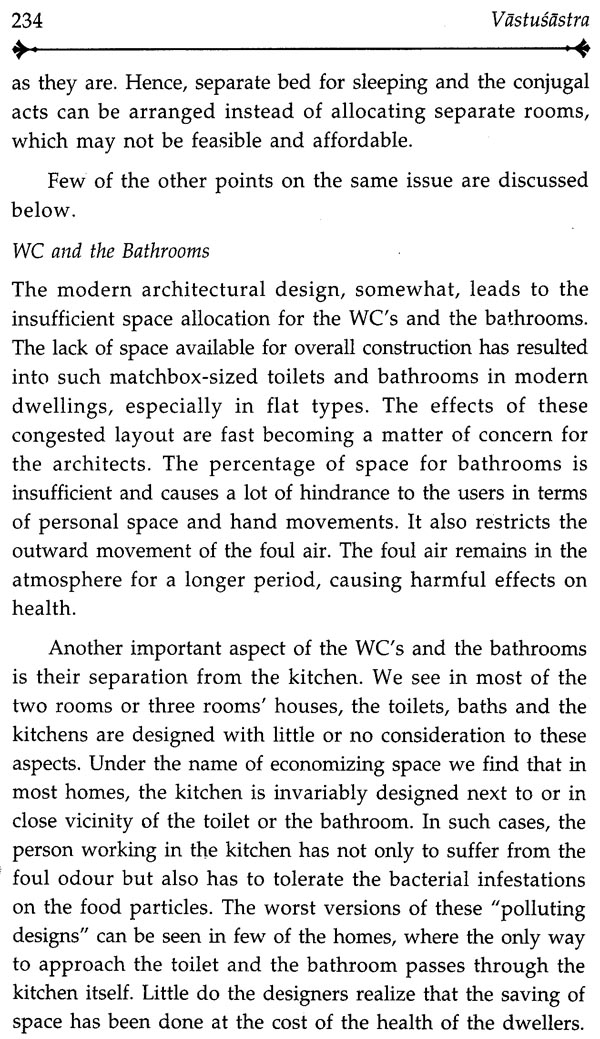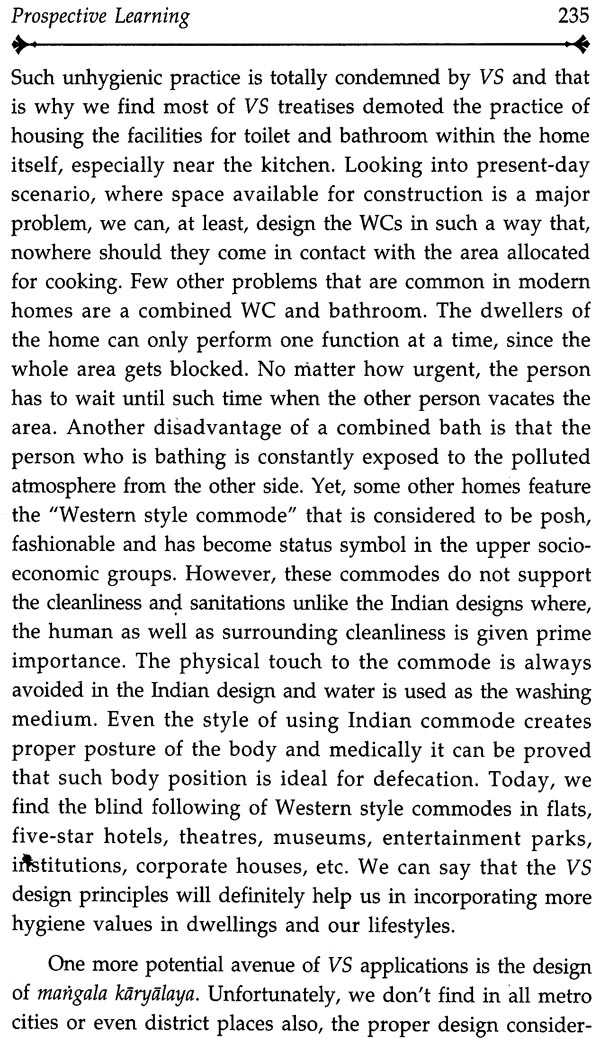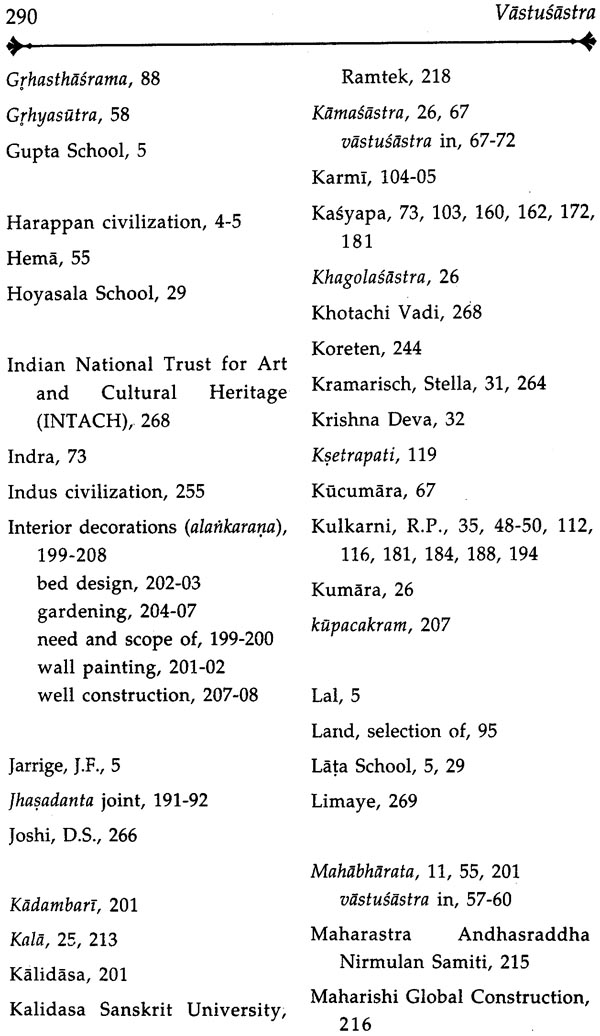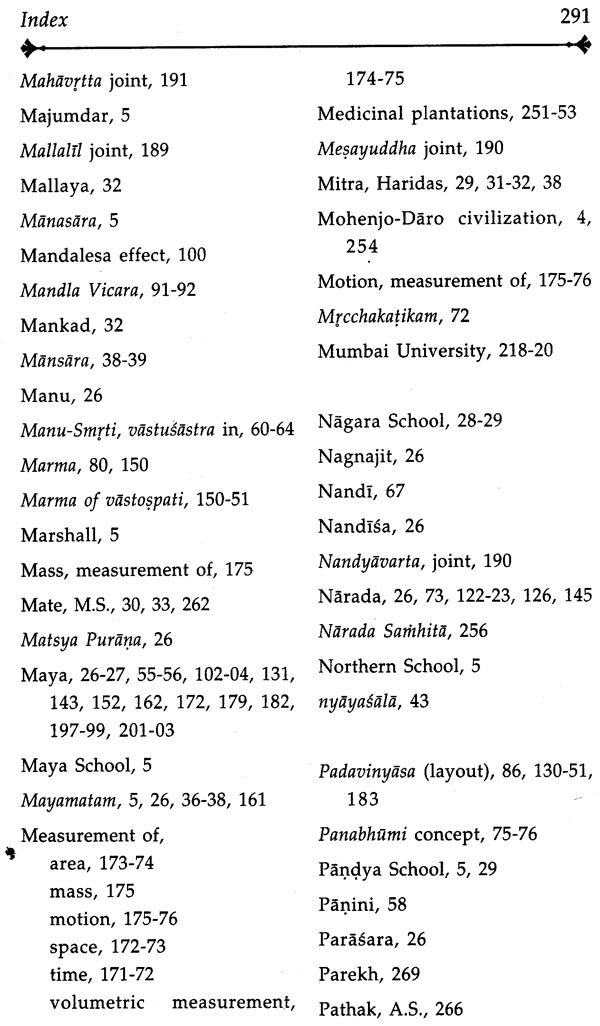
Vastusastra: Ancient Indian Architecture and Civil Engineering (Retrospects and Prospects)
Book Specification
| Item Code: | IDE484 |
| Author: | Rahul Vishwas Altekar |
| Publisher: | D. K. Printworld Pvt. Ltd. |
| Language: | English |
| Edition: | 2004 |
| ISBN: | 8124602468 |
| Pages: | 310 (with Figures) |
| Cover: | Hardcover |
| Other Details | 8.8" X 5.7" |
Book Description
Though there has been considerable interest in vastusastra in recent times and the orientation aspects of vastusastra have been often discussed, little is known of the essential elements that constitute vastusastra and its scientific application in the present day. Based on extensive research, the work, Vastusastra attempts to address this aspect. Examining comprehensively the subject of vastusastra: its conceptual roots in Silpasastra and its later evolution as dealt with in the Vedas, the Epic literature, Arthasastra, literature on ayurveda and Kamasutra literature, the volume analyses technical aspects of vastusastra by concentrating on the essential elemens (angas) of vastusastra which involve decision-making and actual construction methods, art of engineering and role and responsibilities of engineers, and aspects related to land materials and rituals associated with use of building after its construction. It discusses the eco-friendly life style of the ancient Indians based on vastusastra principles. Giving minute attention to details, it focuses on the application of vastusastra in the present-day society - how the vastusastra principles can be scientifically applied and the potential of application of vastusastra keeping in view modern trends in architectural science and civil engineering.
The book will be useful for students and scholars of architecture and engineering and those interested in vastusastra.
About the Author:
Dr. Rahul V. Atlekar, an expert on vastusastra, is a production engineer with years of industrial, corporate training and consulting experience in materials management and IT strategy among other areas. He has delivered lectures on vastusastra and ancient Indian architecture and engineering. He is at present involved in vastusastra consultancy.
| Preamble | v | |
| Abbreviations | xii | |
| Acknowledgements | xv | |
| Part I |
||
| 1. | Evolution of Vastusastra | 3 |
| Introduction | 3 | |
| Pre-Vedic Period | 5 | |
| Vedic Era | 12 | |
| Later Developments | 24 | |
| 2. | Analysis of the Literature or Vastusastra | 30 |
| Survey | 30 | |
| Objectives | 47 | |
| 3. | Literary Reflections | 52 |
| Vastusastra in Ramayana | 52 | |
| Vastusastra in Mahabharata | 55 | |
| Vastusastra in Dharmasastra | 57 | |
| Vastusastra in Arthasastra | 64 | |
| Vastusastra in Kamasastra | 67 | |
| Vastusastra in Ayurveda | 72 | |
| Part II |
||
| 4. | Introduction to Astanga Vastusastra | 85 |
| 5. | Characteristics of a Host (Yajamana) | 88 |
| Name | 89 | |
| Horoscope | 93 | |
| Caste | 95 | |
| Profession | 97 | |
| Anthropometrics of the Yajamana | 100 | |
| 6. | Characteristics of an Engineer (Silpi) | 102 |
| Sthapati | 102 | |
| Sutragrahi | 103 | |
| Taksaka | 103 | |
| Vardhaki | 104 | |
| Karmi | 104 | |
| Selection process of Silpi | 105 | |
| Hierarchies | 105 | |
| Income division | 106 | |
| 7. | Land Selection (Bhumi) | 107 |
| Land Formation | 107 | |
| Testing and Selection | 109 | |
| Salyavicara | 114 | |
| Conclusion | 116 | |
| 8. | Rituals (Vastospati) | 118 |
| Introduction | 118 | |
| Rituals | 120 | |
| 9. | Lay-out (Padavinyasa) | 130 |
| Vastupurusamandala | 130 | |
| Orientation of Elements of VPM | 142 | |
| Concepts and Calculations of Ayadi | 147 | |
| Structural Considerations | 150 | |
| 10. | Building Materials (Vastu) | 152 |
| Ancient Indian Material Technology | 152 | |
| Study of Building Materials | 158 | |
| 11. | Art and Practices of Engineering (Sthapatya) | 167 |
| Philosophical Approach | 167 | |
| Metrology, Tooling and Instrumentation | 171 | |
| Estimation | 179 | |
| Design of Merging Elements | 181 | |
| Structures | 189 | |
| Project Management | 193 | |
| 12. | Repairs, Modifications and Interior Decorations (Alankarana) | 197 |
| Repairs, Modifications | 197 | |
| Interiors and Exteriors | 199 | |
| Part III |
||
| 13. | Scenario Analysis | 211 |
| Introduction | 211 | |
| Data Collection and Analysis | 212 | |
| 14. | Prospective Learning | 222 |
| Technical Aspects | 222 | |
| Social Aspects | 238 | |
| Environmental Aspects | 243 | |
| 15. | Conclusions | 254 |
| Summary | 254 | |
| Conclusions, Recommendations and Research Benefits | 260 | |
| Appendices | ||
| I. Estimation of One-angula in Millimetres | 273 | |
| II. SHS References by Vaze | 274 | |
| III. Questionnaire | 275 | |
| Bibliography | 278 | |
| Glossary | 283 | |
| Index | 287 |
